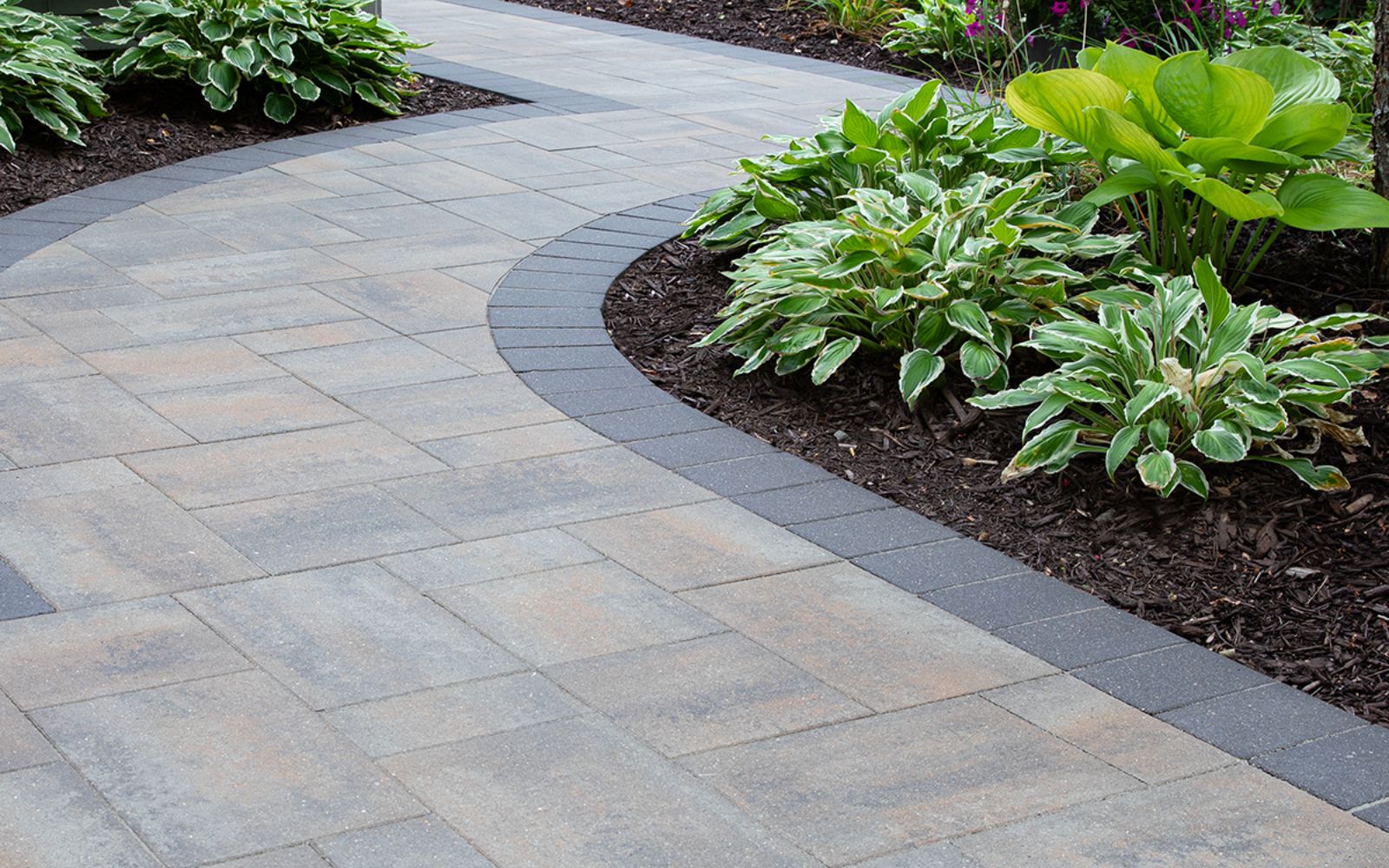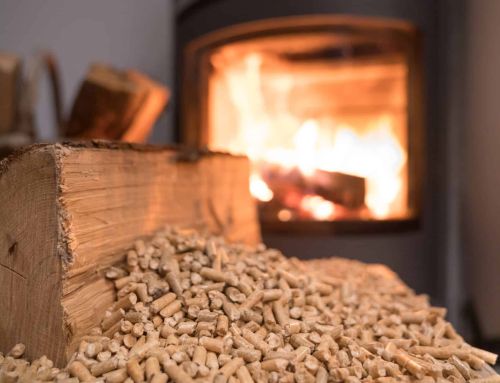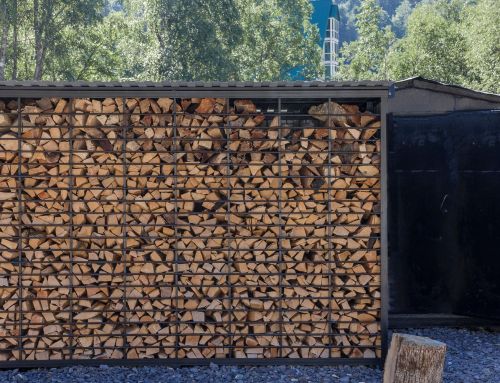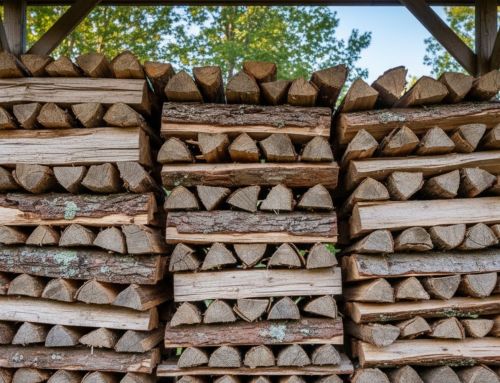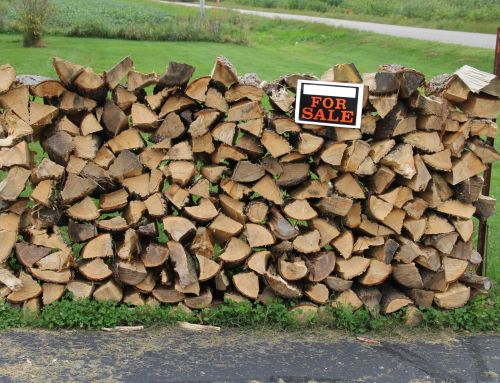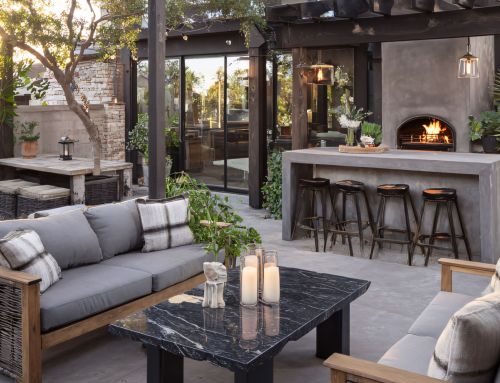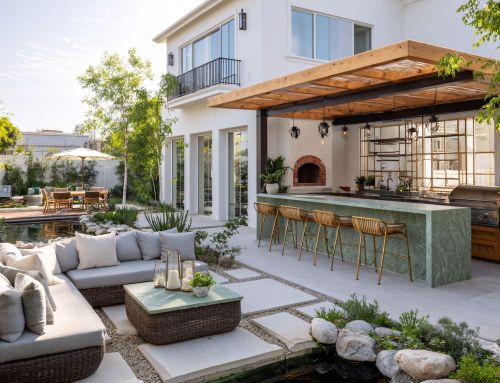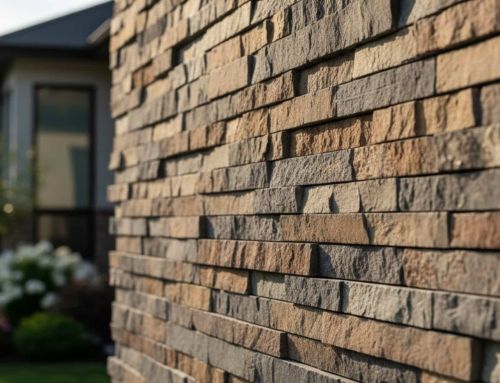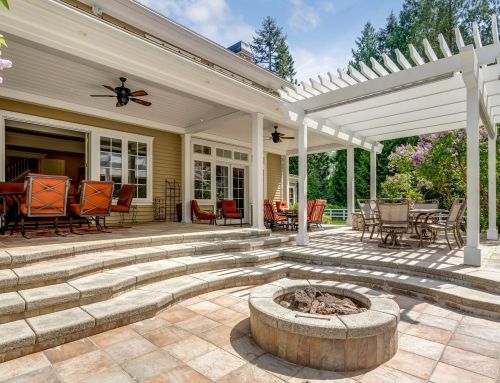The first step your guests take onto your yard and property sets the tone for their entire experience of your home. Walkways serve as more than just functional paths; they’re the welcoming ribbon that guides visitors from the street to your front door, creating anticipation and establishing your home’s character before anyone even rings the doorbell. In Massachusetts, where our homes range from historic colonials to sleek contemporary designs, the challenge lies in creating pathways that complement our architecture while standing up to harsh New England winters, ensuring that the ground is level.
A well-designed walkway doesn’t just connect point A to point B; it enhances your home’s curb appeal, increases property value, and provides safe, accessible passage year-round, reflecting the hard work put into its design. The beauty of modern walkway ideas lies in their incredible versatility, whether you’re envisioning a grand entrance with oversized concrete slabs, a charming brick pathway that echoes colonial heritage, or a contemporary paver walkway that seamlessly connects your driveway to your front door. Today’s materials and design options can bring any vision to life.
Exploring Walkway Material Choices
The Growing Appeal of Concrete Paver Walkways
Concrete paver walkways have become one of the most popular choices for Massachusetts homeowners, offering consistency in size, shape, and color while providing flexibility to create virtually any design pattern with different layers. Modern concrete pavers range from traditional 4×8-inch units perfect for intricate patterns to oversized 24×24-inch slabs that create dramatic, contemporary statements.
What sets quality concrete pavers apart is their exceptional durability; they’re typically two to three times stronger than poured concrete and can flex with ground movement without cracking. This flexibility makes them ideal for New England’s freeze-thaw cycles, where rigid materials often fail and may need to be removed for better options.
The Timeless Beauty of Natural Stone Walkway
Natural stone walkways bring unmatched sophistication and form to any house entrance. Bluestone, with its distinctive blue-gray color, has been a New England favorite for centuries, while granite offers exceptional durability in various colors and unique textures from warm grays to rich browns.
Although initial costs are higher than concrete options, natural stone walkways can last for generations with minimal maintenance. However, successful installation requires proper base preparation and understanding how different stones behave in our climate, and may require permission if large adjustments are needed, making professional selection guidance valuable for long-term satisfaction.
The Classic Colonial Charm of Brick Pavers
For homes that call for traditional appeal, brick paver walkways offer warmth and character that perfectly complements colonial, cape, and historic New England architecture, making it the perfect place to start your design. Modern concrete brick pavers provide the same aesthetic appeal as clay brick but with enhanced durability and more consistent sizing.
The rich red and brown tones of brick work particularly well with homes featuring natural materials like wood siding or stone foundations. Brick walkways also pair beautifully with traditional landscape plants, creating a cohesive design that feels like it has been part of the property for decades, saving hours of maintenance.
Popular Walkway Design Ideas
Modern and Contemporary Approaches
Oversized concrete slabs create a dramatic impact with minimal visual clutter, with large-format pavers (typically 24 inches or larger) featuring grooves that work exceptionally well with contemporary home styles. Similarly, Linear pathway designs emphasize clean lines using rectangular pavers in patterns that create a sense of movement with gentle curves that draw the eye toward your entrance.
Additionally, elevated walkways add architectural interest by raising the path slightly above the surrounding landscape, working well for homes with elevation changes while creating excellent drainage and making a bold design statement at the end of the pathway.
Traditional and Timeless Styles
Herringbone brick patterns offer classic New England appeal with excellent structural integrity, as the interlocking pattern distributes weight evenly and resists shifting. Alternatively, natural stone stepping stones create organic pathways that feel natural in your landscape. The irregular shapes and natural variations in color and texture provide visual interest while maintaining a relaxed, garden-like atmosphere. Meanwhile, curved pathway designs soften the transition between your driveway and front door. These designs work particularly well with traditional architecture and established landscape gardens.
Specialty Solutions for Unique Needs
Wide entrance walkways accommodate multiple people walking side by side and meet accessibility requirements, making the job easier for everyone. A width of 5-6 feet provides a bit more comfortable passage and creates a grand entrance appropriate for larger homes or those designed for entertaining, especially when considering the slope. Meanwhile, decorative border integration combines different materials to create visual definition. Contrasting pavers or natural stone edging can frame your main walkway material while adding sophisticated detail.
Size and Layout Considerations
The ideal walkway width depends on your home’s scale and intended use, with standard front walkways requiring at least 4 feet for comfortable passage, while 5-6 feet allows two people to walk side by side. Consider the relationship between your walkway and other hardscape elements, as a successful design creates smooth transitions between your driveway, walkway, front steps, and any patio or porch areas. When planning your layout, think about both daytime and nighttime use, ensuring gentle curves add visual interest while keeping the path intuitive and well-lit for safe evening navigation.
Underground PVC Pipe Drainage Systems for Walkways
For walkways in challenging drainage conditions, underground drainage systems provide essential water management that protects your investment and ensures year-round functionality. PVC pipes form the backbone of these systems, offering durability and reliability that Massachusetts weather demands. These perforated 4-inch diameter pipes are installed beneath the walkway base to collect and direct excess water away from the surface.
Underground drainage becomes essential for properties with clay soil, areas where surface water naturally collects, walkways below grade level, or locations where ice formation creates safety hazards. The investment in underground PVC drainage systems pays dividends through extended walkway life, reduced maintenance needs, and elimination of standing water that can cause safety issues during freezing weather.
Choosing Between Professional and DIY Installation
Complex walkway projects benefit from professional expertise, particularly those involving significant elevation changes, integration with existing drainage systems, large-format pavers requiring heavy equipment, natural stone requiring specialized cutting, and accessibility compliance requirements. Professional installers bring specialized tools, experience with local soil conditions, and knowledge of proper installation techniques, often following detailed instructions that ensure long-term performance. Additionally, they can also handle permit requirements and ensure compliance with local building codes, so it’s best to contact professionals for assistance.
Simple, straight walkways using standard-sized concrete pavers can be suitable DIY projects for homeowners with basic construction skills. Essential steps include proper excavation (typically 8-10 inches deep), base preparation with crushed stone, and careful attention to grade and drainage. Success with DIY installation requires the right tools, including a plate compactor, a wet saw for cutting pavers, and proper safety equipment.
Maintenance for Long-Term Beauty and Decorative Look
Seasonal Care Requirements
Spring maintenance involves inspecting for winter damage, thorough cleaning, and refreshing joint sand as needed. During summer, focus on regular sweeping to prevent organic buildup and prompt stain removal, while addressing weed growth in joints quickly.
Fall preparation includes clearing leaves and debris, inspecting drainage systems, and ensuring the walkway is ready for winter weather. Finally, winter care requires gentle snow removal techniques and avoiding harsh de-icing chemicals that can damage pavers and surrounding vegetation.
Routine Maintenance Tasks
Regular sweeping prevents organic matter from accumulating in joints and staining the surface. For routine cleaning, water and mild detergent are usually sufficient, applied with a soft-bristled brush.
Joint sand maintenance involves periodically refreshing the sand between pavers to maintain stability and prevent weed growth. Polymeric sand offers superior performance by hardening when wet while remaining flexible. Stain prevention starts with prompt cleanup of spills, particularly oil-based substances. Many modern pavers feature stain-resistant technologies that make cleanup easier, but quick action remains the best defense.
Enhancing Your Walkway Design
Lighting Integration
Proper lighting transforms your walkway from a hard daytime feature into an evening showcase. LED pathway lights along the edges provide safety while creating a beautiful nighttime ambiance, which can be showcased in a video. Consider low-voltage systems for energy efficiency and easier installation. In-ground lights between pavers offer a modern approach that’s particularly effective with large-format concrete slabs. Solar options provide installation flexibility without electrical work, though battery-powered systems offer more reliable performance.
Landscape Coordination
Your walkway should integrate seamlessly with surrounding plantings, with low-growing perennials and ornamental grasses working well along edges to provide seasonal color without overwhelming the hardscape. Consider how mature plant sizes will affect the walkway over time, as small shrubs may encroach on the path as they grow, making it important to plan for mature sizes. Seasonal interest keeps your entrance attractive year-round through evergreens for winter structure, flowering perennials for spring and summer color, and fall foliage plants.
Troubleshooting Common Issues
Settling and Stability Problems
Minor settling is normal in the first year after installation, particularly in areas where the base has been filled with challenging soil conditions. Individual pavers can be lifted and leveled easily, one of the major advantages over poured concrete surfaces.
Drainage and Water Management
Standing water on walkways indicates inadequate drainage that needs prompt attention. Check that the surface maintains proper slope and that adjacent soil grades direct water away from the walkway.
Conclusion
A thoughtfully designed walkway transforms your home’s entrance while providing decades of reliable service and enhanced curb appeal. The key to success lies in choosing appropriate materials for our Massachusetts climate, ensuring proper installation, and maintaining the surface through regular care. Whether you’re drawn to the clean lines of modern concrete pavers, the timeless appeal of natural stone, or the traditional charm of brick, there’s a walkway solution that can bring your vision to life.
At Old Station Outdoor & Landscape Supply, we’ve been helping Massachusetts homeowners create beautiful, durable walkways for years. Our extensive selection includes premium materials backed by expert advice and local knowledge of what works best in our challenging New England climate. Contact us today to explore your options and speak with our experienced team about creating the perfect entrance to your home.
FAQs
How much does a concrete paver walkway cost?
Costs vary based on material choice, size, and installation complexity, especially when components need to be removed. Basic concrete paver walkways typically range from $15-25 per square foot installed, while premium natural stone options can cost $30-50 per square foot.
What are the different types of outdoor walkways?
The different types of outdoor walkways include concrete paver walkways, natural stone pathways, brick paver walkways, poured concrete walks, gravel paths, and stepping stone designs. Each type offers unique aesthetic and functional benefits suited to different home styles and budgets.
What is a paver walkway?
A paver walkway is a pathway constructed using individual interlocking units made from concrete, natural stone, or brick laid over a prepared base.
Can you put pavers over a concrete walkway?
Yes, you can put pavers over a concrete walkway if the existing concrete is in good condition and proper drainage is maintained. However, this installation requires professional evaluation to ensure structural integrity and proper height transitions.

